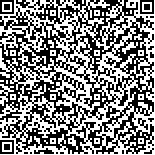| 引用本文: |
-
廖思明,卢波,彭立新,黄纪民,陈东,Frederic A. Troy,黄日波,周国平.多聚唾液酸转移酶ST8SiaⅡ的结构和功能域[J].广西科学,2017,24(1):120-126. [点击复制]
- LIAO Siming,LU Bo,PENG Lixin,HUANG Jimin,CHEN Dong,Frederic A. Troy,HUANG Ribo,ZHOU Guoping.Structural and Functional Domains of Polysialyltransferase ST8Sia Ⅱ Required for Polysialylation of Neural Cell Adhesion Molecules[J].Guangxi Sciences,2017,24(1):120-126. [点击复制]
|
|
| |
|
|
| 本文已被:浏览 547次 下载 705次 |

码上扫一扫! |
| 多聚唾液酸转移酶ST8SiaⅡ的结构和功能域 |
|
廖思明1, 卢波1, 彭立新1, 黄纪民1, 陈东1, Frederic A. Troy2, 黄日波1,2, 周国平1,3
|
|
|
| (1.广西科学院, 国家非粮生物质能源工程技术研究中心, 广西南宁 530007;2.广西大学, 广西南宁 530004;3.美国戈登生命科学研究所, 波斯顿MA 02478) |
|
| 摘要: |
| ST8SiaⅡ(STX)和ST8SiaⅣ(PST)是两个来源于哺乳动物细胞的、具有高度同源性的多聚唾液酸酶,它们已经被克隆,基因序列也已被测定。这两个酶能催化神经细胞黏附分子(NCAM)的多聚唾液酸化。NCAM是多聚唾液酸(polySlA)的主要载体。在NCAM多聚唾液酸化过程中,STX和PST能将活化的胞苷-磷酸-乙酰神经氨酸(CMP-Neu5Ac)传送到NCAM糖蛋白受体的N-和O-型寡聚糖链上,从而合成α-2,8-多唾液酸聚糖(polySA)。近来我们使用Phyre 2软件构建了多聚唾液酸ST8SiaⅡ酶的三维结构模型,给出了该酶中多聚唾液酸转移酶结构域(PSTD)和多聚碱性氨基酸区域(PBR)两个功能域的结构特征,认为在这两个区域中有几个氨基酸残基在引起多聚唾液酸化过程中起到了关键作用。我们的研究结果为研究ST8SiaⅡ酶催化NCAM多聚唾液酸化的分子机制提供了新的结构信息,也为和该酶所联系的肿瘤细胞转移的抑制机制和抑制物/药物的研究和设计,提供更有价值的理论依据。 |
| 关键词: 肿瘤转移 多聚唾液酸(polySia) 多聚唾液酸转移酶结构域(PSTD) 多聚碱性氨基酸区域(PBR) 多聚唾液酸转移酶Ⅳ(PST) 神经细胞黏附分子(NCAM) 多聚唾液酸化 蛋白质三维结构 |
| DOI:10.13656/j.cnki.gxkx.20170223.001 |
| 投稿时间:2017-02-18 |
| 基金项目:国家自然科学基金项目(31560251),广西自然科学基金项目(2015GXNSFAA139053),广西科学与技术开发计划项目(14123001-19,15104001-6),和广西科学院基本科研项目(15YJ22SW02)资助 |
|
| Structural and Functional Domains of Polysialyltransferase ST8Sia Ⅱ Required for Polysialylation of Neural Cell Adhesion Molecules |
|
LIAO Siming1, LU Bo1, PENG Lixin1, HUANG Jimin1, CHEN Dong1, Frederic A. Troy2, HUANG Ribo1,2, ZHOU Guoping1,3
|
| (1.National Engineering Research Center for Non-food Biorefinery, Guangxi Academy of Sciences, Nanning, Guangxi, 530007, China;2.Guangxi University, Nanning, Guangxi, 530004, China;3.Gordon Life Science Institute, Boston, MA 02478, USA) |
| Abstract: |
| ST8Sia Ⅱ (STX) and ST8Sia Ⅳ (PST) are two highly homologous mammalian polySTs, which have been cloned, sequenced and shown to catalyze polysialylation of the neural cell adhesion molecule (NCAM), the major carrier protein of polySia. Two Polysialyltransferases (polySTs) catalyze synthesis of α-2, 8-polysialic acid (polySia) glycans by carrying out the activated CMP-Neu5Ac (Sia) to N-and O-linked oligosaccharide chains on acceptor glycoproteins.Based on recent published studies, we have determined the 3D model of ST8Sia Ⅱ using Phyre 2 software, and suggested the critical amino acid residues within the PSTD and PBR motifs of ST8Sia Ⅱ essential for polysialylation.These results provide new structural information for revealing a detailed mechanisms of polyST-NCAM interaction and polysialylation of NCAM, and the study of the pharmacological inhibition of ST8Sia Ⅱ in modulating tumor cell migration. |
| Key words: tumor metastasis polysialic acid (polySia) polysialyltransferase domain (PSTD) polybasic region (PBR) ST8Sia Ⅳ(PST) neural cell adhesion molecules (NCAM) polysialylation protein 3D structure |
|
|
|
|
|